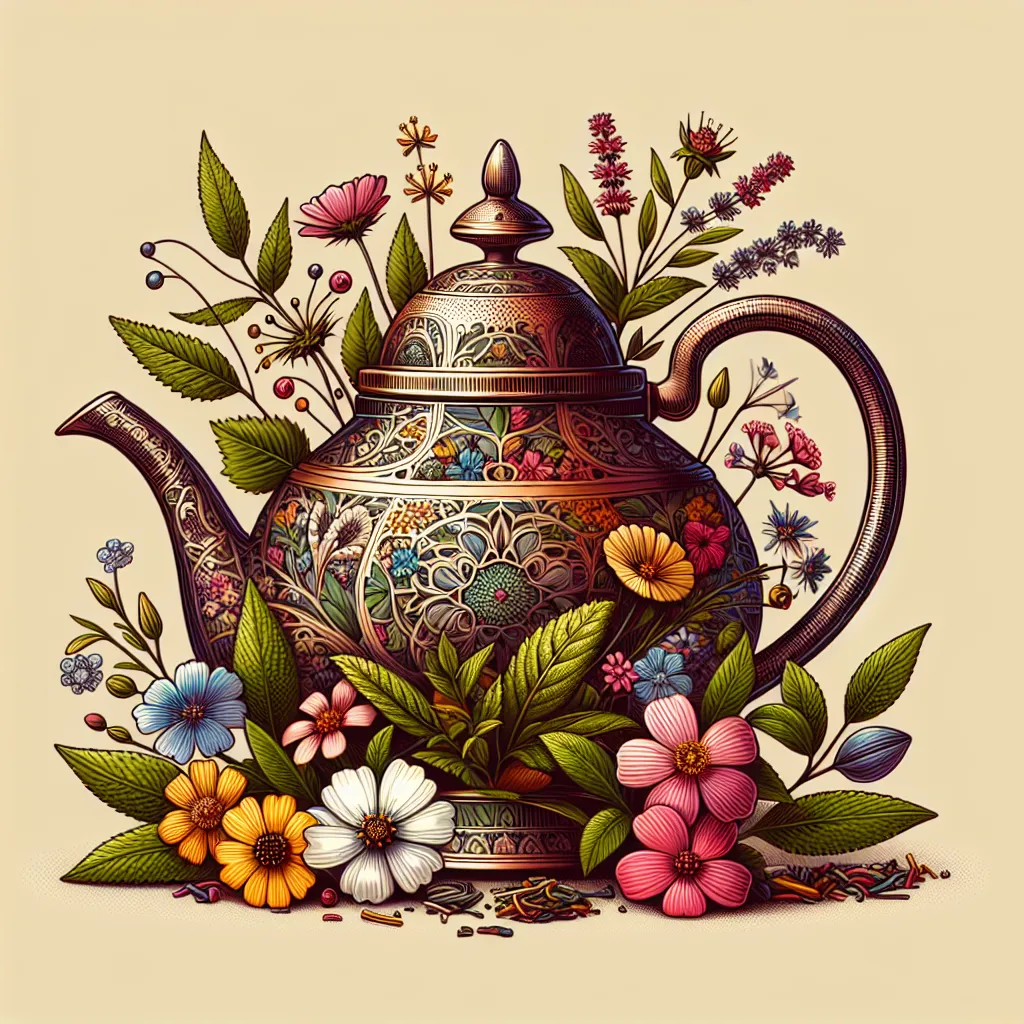The Origins of Herbal Teas
Exploring the world of herbal teas offers a fascinating journey into the origins of these delightful infusions. Herbal teas, also known as tisanes, have been enjoyed for centuries across various cultures and civilizations. The history of herbal teas can be traced back to ancient China, Egypt, and India, where they were valued for their medicinal properties and soothing effects.
Chinese herbal teas, for example, have a rich tradition dating back to ancient times, with ingredients such as chrysanthemum, ginseng, and ginger being used for their health benefits. Similarly, in ancient Egypt, herbal teas made from ingredients like hibiscus and mint were cherished for their refreshing taste and believed healing properties. Meanwhile, in India, Ayurvedic herbal teas have been an integral part of traditional medicine, with blends featuring spices like turmeric, cardamom, and holy basil.
Throughout history, herbal teas have been embraced for their natural remedies and comforting qualities. The diverse origins of herbal teas reflect the deep-rooted connection between humans and the bountiful gifts of nature, paving the way for the wide array of herbal tea varieties available today.
As we delve deeper into the world of herbal teas, understanding their origins provides a profound appreciation for these time-honored brews that continue to captivate tea enthusiasts around the globe.
Health Benefits of Drinking Herbal Teas
When it comes to accessing the health benefits of herbal teas, the options are as diverse as the flavors and aromas that these teas offer. From soothing an upset stomach to boosting the immune system, herbal teas have been cherished for their medicinal properties for centuries. Chamomile tea, for example, is celebrated for its calming effects, aiding in relaxation and sleep. Peppermint tea, on the other hand, is popular for its ability to alleviate digestive issues and freshen breath. Meanwhile, ginger tea is known for its anti-inflammatory and immune-boosting properties. These are just a few examples of the wide array of herbal teas and their respective health benefits.
Exploring Unique Flavors in Herbal Teas
Exploring the world of herbal teas opens up a whole new universe of flavors and aromas, providing a delightful experience for tea enthusiasts. One of the most intriguing aspects of herbal teas is the diverse range of unique flavors they offer. From the soothing floral notes of chamomile to the invigorating tang of lemongrass, each variety brings its own distinct character to the teacup.
Chamomile, derived from the daisy-like flowers of the Asteraceae plant family, offers a delicate and slightly sweet flavor with hints of apple. Its calming properties make it a popular choice for relaxation and unwinding after a long day. On the other hand, lemongrass, with its citrusy and zesty profile, adds a refreshing twist to herbal blends, awakening the senses and uplifting the spirit.
Explorers of herbal teas can also indulge in the earthy richness of rooibos, a South African herb known for its reddish-brown infusion and naturally sweet, nutty flavor. Meanwhile, the robust and slightly peppery taste of ginger root brings warmth and depth to herbal concoctions, making it a go-to option for soothing the throat and combating seasonal colds.
With a myriad of flavors to discover, including the minty freshness of peppermint, the spicy kick of cinnamon, and the subtly floral essence of lavender, the world of herbal teas beckons with endless opportunities for flavor exploration.
Herbal Tea Blends: Creating Your Own Unique Brew
Herbal tea blends offer a delightful way to personalize your tea-drinking experience and reap the numerous benefits of different herbs. Creating your own unique brew allows you to tailor the flavor profile and potential health benefits to your liking. Whether you’re a fan of floral notes, earthy undertones, or zesty infusions, there is a vast array of herbs to experiment with.
When crafting your herbal tea blend, start by choosing a base herb that aligns with your taste preferences and wellness goals. Chamomile, peppermint, and hibiscus are popular choices, each offering distinct flavors and potential health benefits. From there, consider adding complementary herbs to enhance the flavor and create a well-rounded blend. For instance, lavender can add a delicate floral note, while ginger can infuse warmth and spice into the mix. Additionally, experimenting with citrus peels, cinnamon sticks, or lemongrass can elevate the sensory experience of your herbal tea blend.
It’s essential to strike a balance between different herbs to ensure a harmonious flavor profile. Start with small batches to test the combination of herbs and make adjustments as needed. The beauty of crafting your own herbal tea blends lies in the ability to customize each batch according to your mood and preferences.
Finally, don’t forget to consider the potential health benefits of the herbs you’re using. For example, if you’re aiming for a calming blend, consider incorporating herbs like chamomile and lavender. On the other hand, if you’re looking for a revitalizing brew, ginger and lemongrass can be excellent additions. By understanding the properties of each herb, you can create blends that cater to both your palate and your well-being.
Exploring the world of herbal tea blends is a gratifying journey that invites creativity and self-expression. By experimenting with different combinations and taking note of your favorite mixtures, you can curate a collection of personalized blends that cater to your every mood and occasion.

